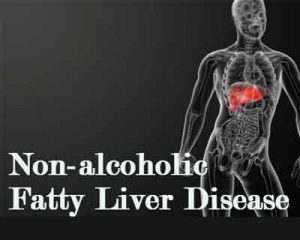- Home
- Editorial
- News
- Practice Guidelines
- Anesthesiology Guidelines
- Cancer Guidelines
- Cardiac Sciences Guidelines
- Critical Care Guidelines
- Dentistry Guidelines
- Dermatology Guidelines
- Diabetes and Endo Guidelines
- Diagnostics Guidelines
- ENT Guidelines
- Featured Practice Guidelines
- Gastroenterology Guidelines
- Geriatrics Guidelines
- Medicine Guidelines
- Nephrology Guidelines
- Neurosciences Guidelines
- Obs and Gynae Guidelines
- Ophthalmology Guidelines
- Orthopaedics Guidelines
- Paediatrics Guidelines
- Psychiatry Guidelines
- Pulmonology Guidelines
- Radiology Guidelines
- Surgery Guidelines
- Urology Guidelines
Breakthrough treatment for nonalcoholic fatty liver disease

Lately improved understanding of the mechanisms behind NAFLD has led to new approaches to pharmacotherapy. This review presents an overview of current and investigational therapeutics. The same has been published in Journal of Alimentary Pharmacology & Therapeutics.
A non-alcoholic fatty liver disease is defined as the accumulation of excess fat in the liver and perhaps is the fastest growing cause of liver disease in the Western world. There is no approved pharmacotherapy and it is predicted to become the leading cause of liver transplantation over the next 10 years. While lifestyle modifications remain the mainstay of treatment, only a proportion of individuals are able to make or sustain them, and so more treatment options are required.
Dr. S. A. Townsend and associates in a review article have reassessed the potential benefit of various new drugs being used in clinical practice, those entering phase II trials, and compounds being investigated in pre-clinical studies.The researchers performed a literature search using PubMed to identify relevant studies; linked references were also reviewed.
Medications Used in Patients with Nash for treating Co-morbidities:- Co-morbidities like Dyslipidaemia and hypertension should be managed according to the guidelines. Statins are safe in NASH and are associated with a reduced mortality. If associated hypertension is to be controlled (ARBs) angiotensinogen receptor blockers may have additional anti-fibrotic effects.Associated diabetes has to be treated preferably with Glucagon-like peptide-1 and DDPIV inhibitors, Liraglutide and Sodium glucose co-transporter 2 inhibitors.
- As part of lifestyle change weight loss is the recommended intervention, with a loss of >7% total body weight associated with clearance of histological non-alcoholic steatohepatitis (NASH) and a >10% loss associated with an improvement in fibrosis. But even in when level of motivation is usually high, less than 20% achieve >7% weight loss, and so alternative treatments need to be found.Orlistat remains a useful weight-loss strategy although with insufficient data for its use in NAFLD.
- Vitamin E is an antioxidant, with the potential to reduce oxidative stress in NASH.Vit E and pioglitazone have shown efficacy in non-alcoholic steatohepatitis (NASH), but long-term safety concerns, specifically bladder cancer and osteoporosis with pioglitazone, have limited their use.
- GLP-1 analogues and SGLT-2 inhibitors are currently approved for use in diabetes, have shown early efficacy in NASH and also have beneficial cardiovascular effects.
- Peroxisome proliferator-activator receptors and FXR agonists have potent effects on lipogenesis, inflammation, and fibrosis, respectively, with their efficacy and safety being currently tested in phase 3. As inflammation and apoptosis are key features of NASH agents modulating these pathways are of interest.
- CCR2/5 antagonists downregulate inflammatory pathways and reduce fibrosis with caspase and apoptosis signal-regulating kinase 1 inhibitors reducing apoptosis and fibrosis.
The authors concluded that rising demand and an improved understanding of NASH pathophysiology has led to a surge in development of new therapies. Tailoring pharmacotherapy to the dominant pathogenic pathway in a given patient along with the use of combination therapy is likely to represent the future direction in the treatment of patients with NASH.
For further reference log on to :
Aliment Pharmacol Ther. 2017;46(5):494-507. © 2017 Blackwell Publishing

Disclaimer: This site is primarily intended for healthcare professionals. Any content/information on this website does not replace the advice of medical and/or health professionals and should not be construed as medical/diagnostic advice/endorsement or prescription. Use of this site is subject to our terms of use, privacy policy, advertisement policy. © 2020 Minerva Medical Treatment Pvt Ltd